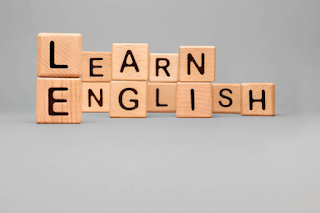
Exploring Language: Letters, Sounds, and Articulation
Letters and Sounds
Introduction
Understanding the relationship between letters and sounds is crucial in language learning and phonetics. Although written language often takes precedence, spoken language is fundamental to human communication.
Spoken Language Primacy
Early Acquisition:
Children learn spoken language through social interactions before formal education.
Historical Context:
Spoken language predates writing; writing evolved to record spoken language.
Letters vs. Sounds
Alphabet: English has 26 letters.
Phonemes:
English utilizes around 44 different sounds.
Complex Relationship:
Letters do not always directly correspond to sounds due to the discrepancy in their numbers.
Vowels and Consonants
Definition: Vowels involve an open vocal tract, while consonants are articulated with obstruction.
Formation: Vowels are made with minimal obstruction, whereas consonants involve various vocal organs.
Syllabic Structure:
Vowels form the core of syllables, while consonants occur at the edges.
Vowel Complexity
Representation:
Vowel sounds can be represented by single or combined letters.
Magic 'E':
'E' at the end of words alters preceding vowel sounds.
Y and W Usage:
Sometimes act as vowel-like consonant sounds.
Consonant Peculiarities
Combination:
Some consonants require multiple letters for representation (e.g., th, sh).
Consonant Doubling:
Indicates vowel shortness (e.g., shaming vs. shamming).
Exception:
X:
Represents a sequence of two consonant sounds, exempt from doubling patterns.
Spelling Challenges
Inconsistencies:
English spelling often deviates from pronunciation.
Examples:
Various words exhibit inconsistent spelling and pronunciation.
Voiced and Voiceless Sounds
Total Sounds:
English comprises 44 sounds (20 vowels, 24 consonants).
Vowels:
Produced without vocal cord obstruction.
Consonants:
Formed with partial or complete vocal tract closure.
Phonemes, Allophones, and Phones
Phonemes:
Significant, non-predictable speech sounds.
Allophones:
Predictable variations within phoneme groups.
Examples: Allophonic differences may vary between languages (e.g., English vs. Japanese).
Diphthongs:
Diphthongs are a type of vowel sound where the tongue glides from one position to another within the same syllable. This movement creates a smooth transition between two vowel sounds, resulting in what sounds like a single, longer vowel sound. In English, there are several diphthongs represented by combinations of vowel letters or symbols:/ai/ as in "I"
/ei/ as in "say"
/oi/ as in "coin"
/ou/ as in "go"
/au/ as in "now"
/əʊ/ as in "goat"
These diphthongs are essential in English pronunciation and contribute to the diversity of vowel sounds in the language.
Voiced and Voiceless Sounds:
In English, all vowels are voiced, meaning the vocal cords vibrate when producing these sounds. However, among consonant sounds, there are both voiced and voiceless ones. Voiced sounds occur when the vocal cords vibrate, while voiceless sounds are produced without vocal cord vibration.
Here are some examples of voiced and voiceless pairs in English:
Voiced: /b/, /d/, /g/, /v/, /z/, /ʒ/ (as in "measure")
Voiceless: /p/, /t/, /k/, /f/, /s/, /ʃ/ (as in "shoe")
You can feel the difference between voiced and voiceless sounds by placing your fingers on your throat while producing these sounds. Voiced sounds will cause vibrations, while voiceless sounds will not.
Understanding the distinction between voiced and voiceless sounds is crucial for accurate pronunciation and comprehension in English.
Main Difference between Vowels and Consonants:
The primary distinction between vowels and consonants lies in their articulation and function within the language.
Vowels:
Produced with an open vocal tract, vowels are speech sounds where the airflow is not obstructed. They form the core of syllables and are essential for word formation and intelligibility.
Consonants:
Articulated with either partial or complete closure of the vocal tract, consonants involve interference with the airflow. Consonants occur at the margins of syllables and contribute to the structure and shape of words.
Understanding these fundamental differences helps in mastering pronunciation and communication in English.
Articulation of Sounds:
The production of speech sounds involves intricate coordination of various organs within the vocal tract. Understanding how sounds are articulated provides insight into the mechanics of speech production.
Vowel Sounds:
Vowel sounds are produced with a relatively open vocal tract, allowing air to flow freely without significant obstruction. The position of the tongue, lips, and jaw determines the specific vowel sound produced. Vowels are classified based on the location of the highest point of the tongue and whether the lips are rounded or spread. For example:
Front Vowels:
Produced with the front part of the tongue raised towards the front of the mouth. Examples include /i/ as in "see" and /ɛ/ as in "pet".
Back Vowels:
Articulated with the back part of the tongue raised towards the back of the mouth. Examples include /u/ as in "boot" and /ɔ/ as in "caught".
Central Vowels:
Pronounced with the tongue in a neutral position. An example is /ə/ as in "about".
Consonant Sounds:
Consonant sounds involve obstruction or constriction of airflow within the vocal tract. The specific manner and place of articulation determine the type of consonant produced. Some common types of consonant sounds include:
Plosives (Stops):
Articulated by briefly blocking the airflow and then releasing it. Examples include /p/, /t/, and /k/ as in "pat", "top", and "cat", respectively.
Fricatives:
Produced by creating friction as air passes through a narrow opening in the vocal tract. Examples include /f/, /s/, and /ʃ/ as in "fan", "sip", and "shoe".
Affricates:
Beginning as plosives and ending as fricatives, affricates involve a gradual release of airflow. Examples include /tʃ/ as in "chair" and /dʒ/ as in "judge".
Nasals:
Produced by lowering the soft palate to allow air to pass through the nasal cavity. Examples include /m/, /n/, and /ŋ/ as in "man", "net", and "sing".
Approximants:
Created by bringing articulators close together but not close enough to produce turbulence. Examples include /r/ and /j/ as in "run" and "yes", respectively.
Understanding the articulatory mechanisms behind vowel and consonant sounds aids in both language learning and speech therapy, helping individuals refine their pronunciation and communication skills.



